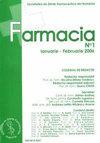A BOX-BEHNKEN DESIGN FOR OPTIMIZATION OF ULTRASOUND-ASSISTED EXTRACTION OF SINAPIC ACID FROM FRAGARIA ANANASSA
IF 1.4
4区 医学
Q4 PHARMACOLOGY & PHARMACY
引用次数: 0
Abstract
The present study focuses on optimizing the extraction process of sinapic acid from Fragaria ananassa using ultrasonic-assisted extraction (UAE). The extraction process study variables were: temperature in the range of 20 to 60°C, extraction time between 20 and 90 minutes and the solid-to-liquid ratio ranging from 10 to 30 mL/g. Response surface analysis determined that the most favourable conditions for sinapic acid extraction were at a temperature of 60°C, extraction time of 55 minutes and at a liquid-to-solid ratio of 30 mL/g. Under these conditions, the extraction yield of sinapic acid was measured at 23.56 mg/g. The experimental results closely aligned with the predicted values, affirming the reliability of the proposed model. Furthermore, UAE proved to be a highly effective method, exhibiting significantly reduced extraction time and producing higher levels of sinapic acid compared to traditional extraction techniques. HPLC analysis confirmed the presence of substantial amounts of sinapic acid in Fragaria ananassa . In conclusion, the optimized UAE method, in conjunction with HPLC-UV analysis, presents a valuable approach for the efficient extraction and estimation of sinapic acid from Fragaria ananassa . These results have the potential to greatly benefit industrial applications that need for extremely high extraction yields of these organic molecules.优化超声波辅助提取山奈酸的箱式贝肯设计
本研究的重点是利用超声波辅助萃取(UAE)优化从洋金花中提取山奈酸的工艺。萃取工艺研究变量为:温度在 20 至 60°C 之间,萃取时间在 20 至 90 分钟之间,固液比在 10 至 30 mL/g 之间。响应面分析表明,萃取山奈酸最有利的条件是温度为 60°C,萃取时间为 55 分钟,固液比为 30 mL/g。在这些条件下,山奈酸的萃取率为 23.56 毫克/克。实验结果与预测值非常吻合,证明了所提模型的可靠性。此外,与传统的萃取技术相比,UAE 被证明是一种高效的方法,它大大缩短了萃取时间,并产生了更高含量的山奈酸。高效液相色谱(HPLC)分析证实了洋桔梗中含有大量的山奈酸。总之,优化的 UAE 方法与 HPLC-UV 分析相结合,为高效提取和估算雏菊中的山奈酸提供了一种有价值的方法。这些结果有望极大地惠及需要极高萃取率的有机分子的工业应用。
本文章由计算机程序翻译,如有差异,请以英文原文为准。
求助全文
约1分钟内获得全文
求助全文
来源期刊

FARMACIA
医学-药学
CiteScore
2.40
自引率
50.00%
发文量
59
审稿时长
6-12 weeks
期刊介绍:
FARMACIA publishes original research papers, invited topical reviews and editorial commentaries and news, with emphasis on conceptual novelty and scientific quality. Main research areas are focused on: pharmacology, toxicology, medicinal chemistry, biopharmacy, drug design, drug delivery, personalized medicine, nanostructures, nutraceuticals, biochemistry and biotechnology. Manuscripts submitted to the Journal are only accepted after the peer review precess. The papers should have not been published in any other journal. The recommendations of the Declaration of Helsinki, for humans, and the International guidelines as accepted principles for the use of experimental animals should be followed.
 求助内容:
求助内容: 应助结果提醒方式:
应助结果提醒方式:


